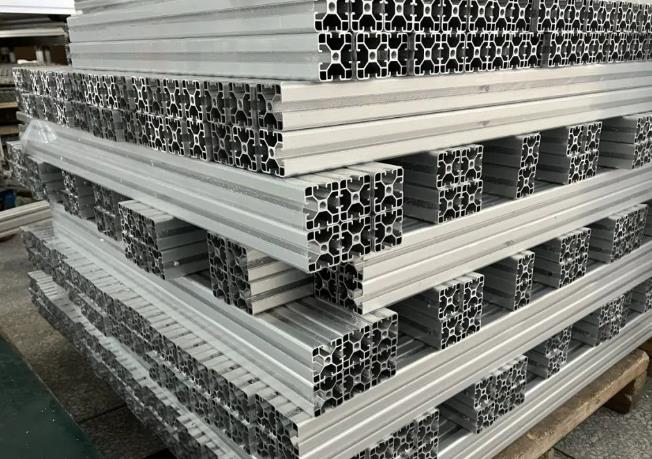Introduction
Aluminum profiles play a critical role in various industries due to their versatile properties and wide range of applications. Among these, industrial and architectural aluminum profiles are particularly prominent. Despite their similar alloy composition and mechanical properties, these profiles serve different purposes and are tailored to meet distinct needs. In this article, we will explore the key differences between industrial and architectural aluminum profiles, helping you understand their unique characteristics and applications.
Section 1: Similarities Between Industrial and Architectural Aluminum Profiles
Both industrial and architectural aluminum profiles are made from 6063 grade aluminum, ensuring they share the same alloy composition and content. As a result, their mechanical properties are identical. This includes weldability, electrical and thermal conductivity, surface treatment performance, corrosion resistance, and cutting performance. Despite these similarities, their applications and specific characteristics vary significantly, which we will delve into next.
Section 2: Differences in Cross-Sectional Shapes
One of the primary differences between industrial and architectural aluminum profiles lies in their cross-sectional shapes. Industrial aluminum profiles typically feature symmetrical structures and are relatively square. These profiles often contain multiple cavities, most of which are round holes, providing structural integrity and versatility for various industrial applications.
In contrast, architectural aluminum profiles are designed with asymmetrical cross-sections and often feature large curvatures. These profiles may also include substantial cantilevers, making them suitable for aesthetic and structural elements in building designs. The design complexity of architectural profiles is aimed at enhancing visual appeal and functionality in construction projects.
Section 3: Differences in Surface Treatment Methods
Surface treatment is another area where industrial and architectural aluminum profiles diverge. Industrial aluminum profiles generally undergo anodizing, and occasionally sandblasting, to achieve a matte effect. The focus here is on maintaining a neat and atmospheric appearance, with most profiles requiring only natural color oxidation and a few opting for black oxidation.
On the other hand, architectural aluminum profiles offer a wide array of surface treatment options, including spraying, electrophoresis, and wood grain transfer. These methods cater to the decorative needs of architectural applications, allowing for a variety of colors and finishes. The emphasis is on achieving an aesthetically pleasing and durable surface that enhances the overall design of buildings and structures.
Section 4: Differences in Quality Requirements
The quality requirements for industrial and architectural aluminum profiles also differ. Industrial profiles demand higher geometric tolerance and superior surface quality of the substrate. This is because the transparent oxide film formed during anodizing can reveal any defects on the surface, necessitating a higher standard of precision and finish.
In comparison, architectural aluminum profiles have relatively lower geometric tolerance requirements. While surface quality is still important, the primary focus is on achieving the desired aesthetic and structural characteristics that meet the needs of architectural designs.
Section 5: Applications and Implications of These Differences
The distinct differences between industrial and architectural aluminum profiles directly influence their applications. Industrial aluminum profiles are widely used in manufacturing, automation, and structural frameworks where precision, durability, and functionality are paramount.
Architectural aluminum profiles, however, are integral to building construction, interior design, and decorative elements. Their design flexibility and extensive surface treatment options make them ideal for creating visually appealing and structurally sound architectural features.
Conclusion
In conclusion, while industrial and architectural aluminum profiles share similar alloy compositions and mechanical properties, their differences in cross-sectional shapes, surface treatment methods, and quality requirements set them apart. Understanding these distinctions is crucial for selecting the right type of aluminum profile for your specific needs. By staying informed about the properties and applications of these profiles, you can ensure optimal performance and aesthetics in your projects.
